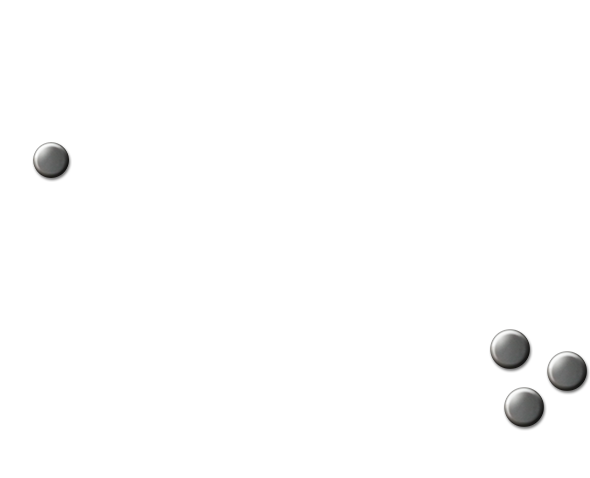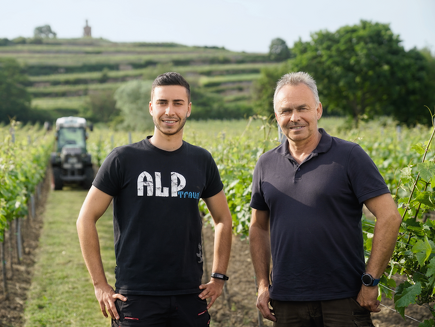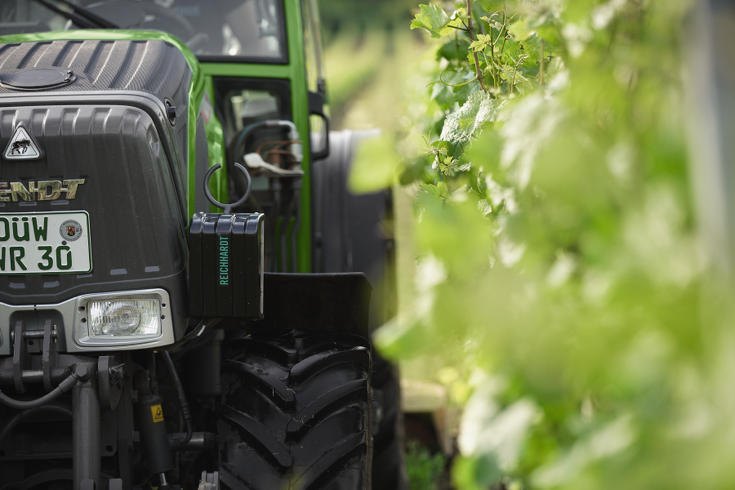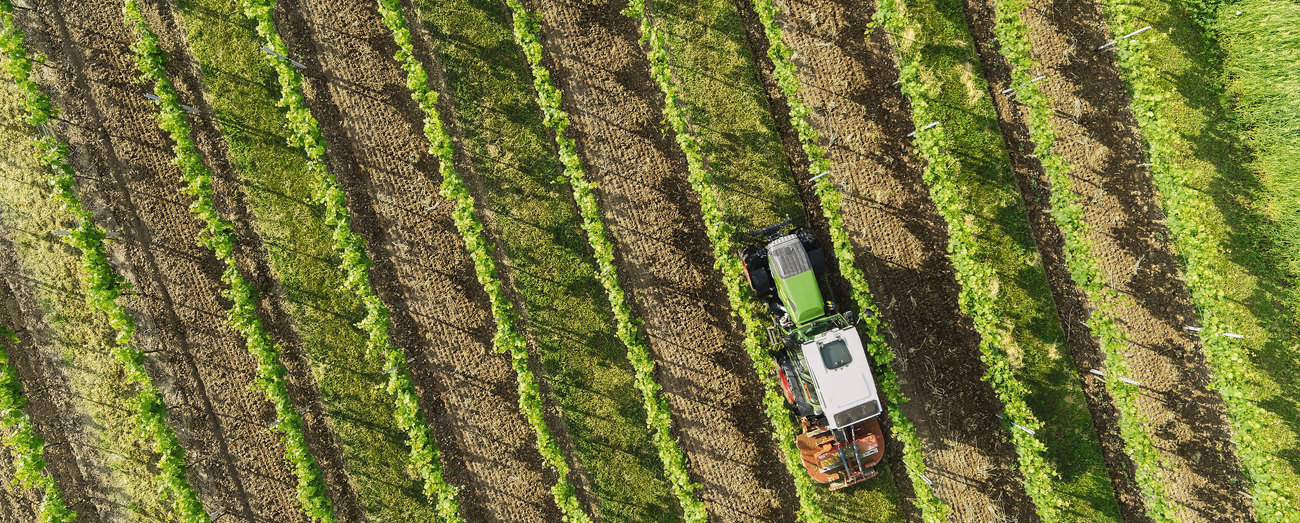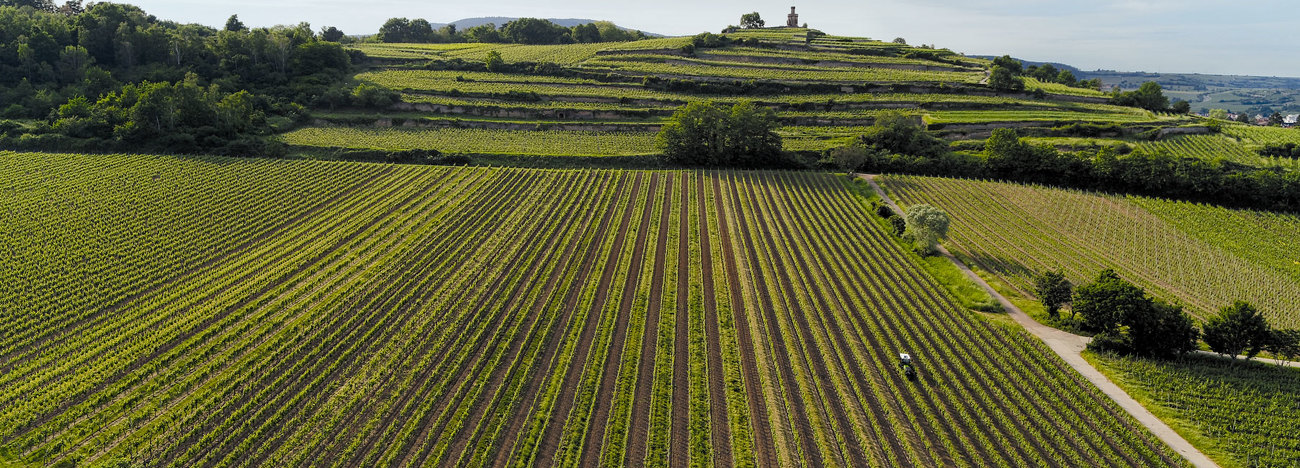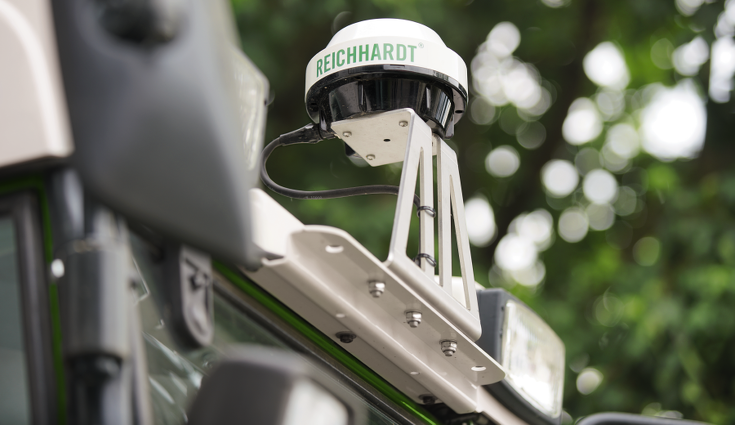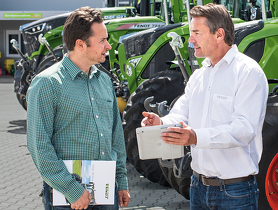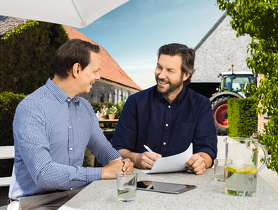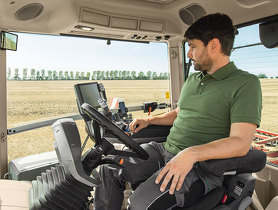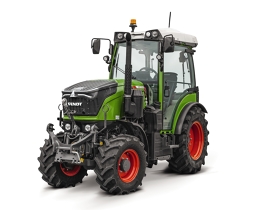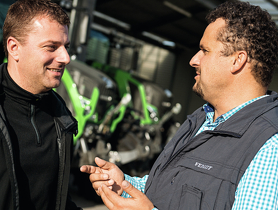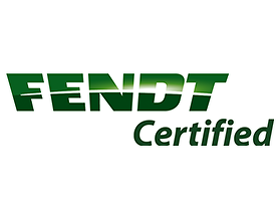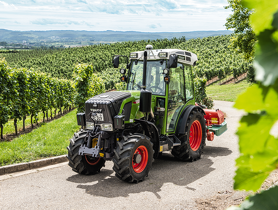Different tools can be added to the tractor, both for plant protection and for foliage work. “You get used to the easy life,” Weil admits openly, which is why he is starting to look for solutions to help. “10 years ago we still had one hand on the gear stick and one foot on the clutch. Tractor development then gave us the gift of the Vario gearbox for vineyard tractors, making it easier to work comfortably in the cab. Why shouldn't winegrowers join the farmers in their automated steering systems?” When the GPS tracking system is used on arable farms, A-B lines are usually set out to accurately steer straight when cultivating the soil. Driving straight is not always feasible in viticulture. With his son Christopher Weil, the 4th generation is now in the starting blocks. A student at Geisenheim University, he takes a break from his studies and gets to work on the family business. He's the one who deals with the details of lane guidance systems for viticulture. He already mastered sensor technology while preparing for his bachelor's thesis. And that knowledge is now coming into fruition. Fendt and Reichhardt have been offering track guidance with ultrasonic sensors for the 200 Fendt series since 2018. This gave the customer the choice between two systems. There's the row-controlled track guidance system with ultrasound, and the position-led track guidance system using GPS. The system must have an open interface in the cab, which integrates the steering valve, the cabling, additional sensors and the safety system.
